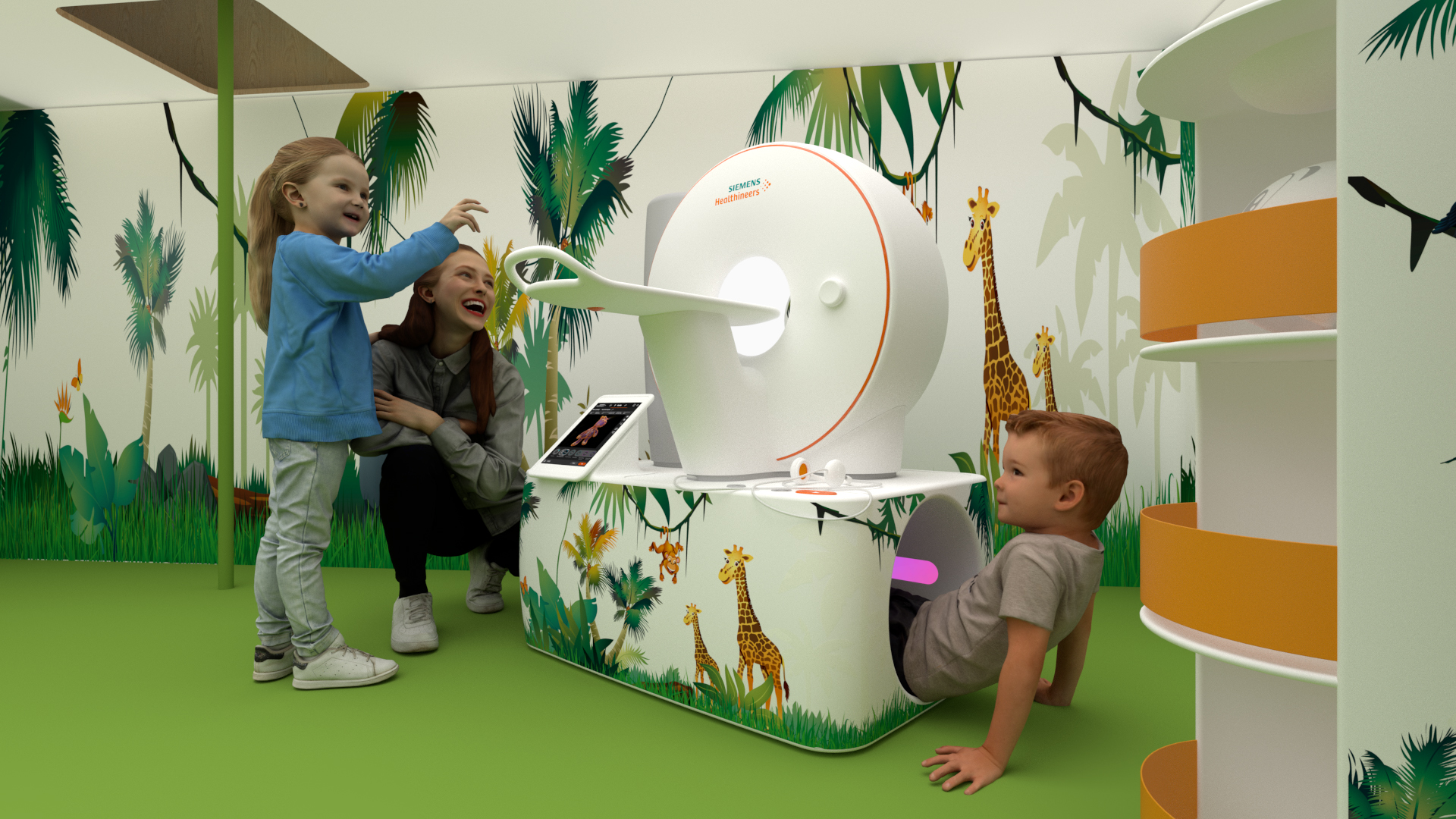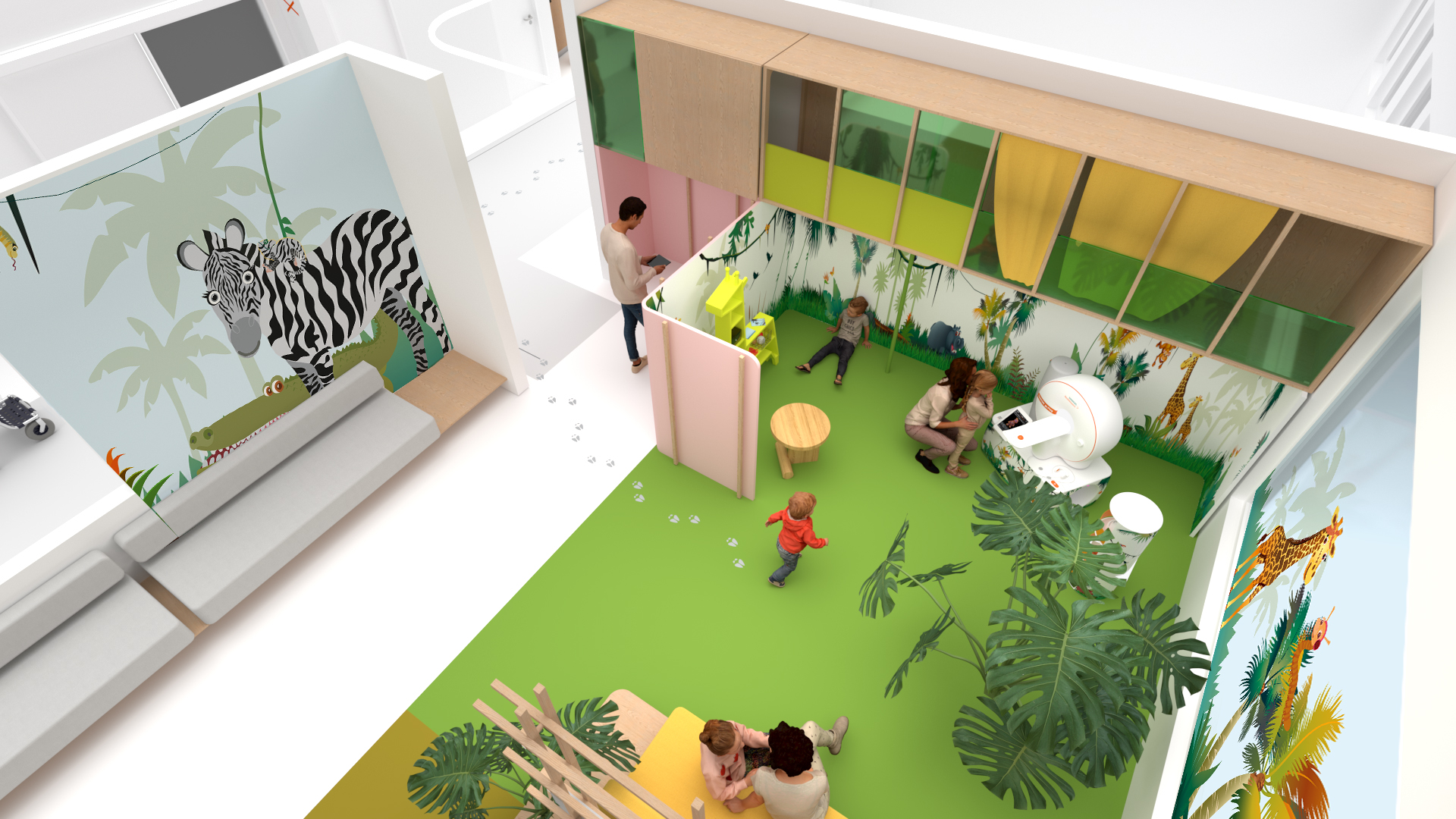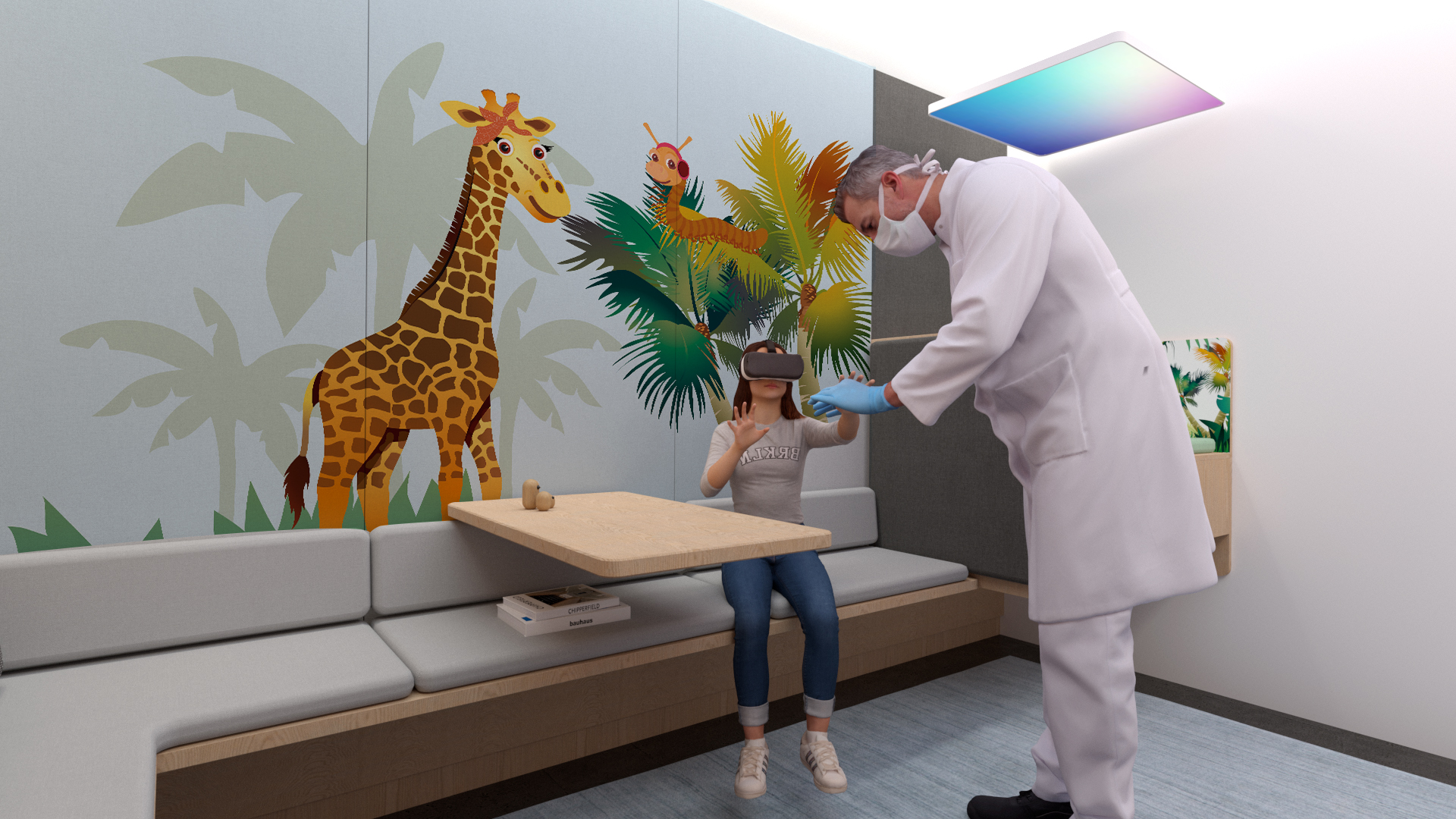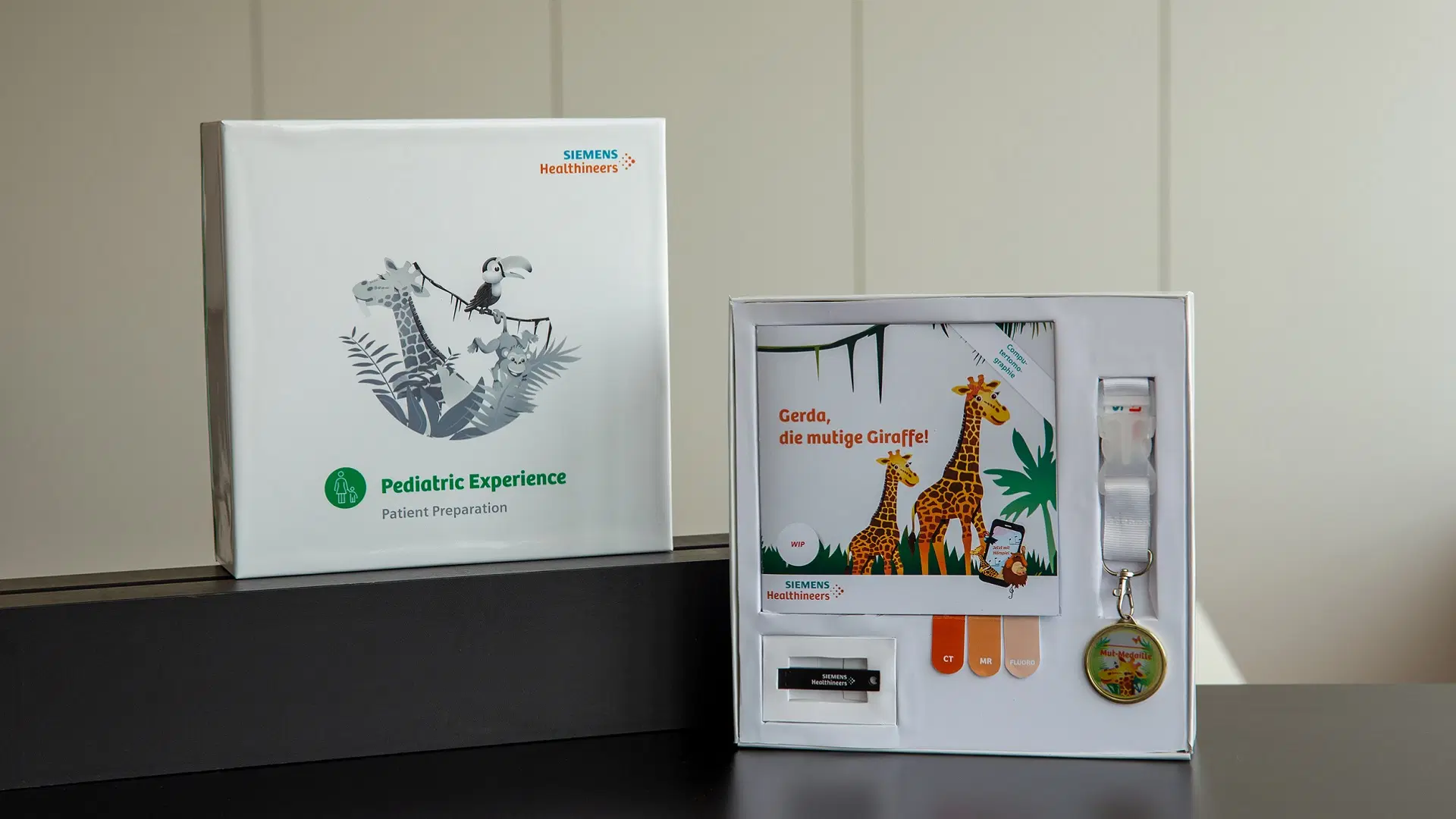Pediatric Experience

Siemens Healthineers
Young patients often experience anxiety during MRI scans, leading to movement, poor image quality, and prolonged sedation. Reducing this anxiety is crucial for improving medical processes and enhancing the overall patient experience, which can lead to better recovery rates and financial benefits for hospitals.
This project aimed to enhance patient experiences for all ages through a human-centered design approach and evidence-based design principles. We developed a storytelling framework to ease the MRI process for young patients, reducing sedation times and improving image quality while enhancing the reputation of Siemens Healthineers’ medical devices as a preferred choice for patients and hospitals.
1
Approach & Strategy
- Grounded in human-centered and evidence-based design principles.
- Focused on understanding the emotional and psychological needs of young patients undergoing MRI exams.
- Defined clear goals and created a strategic roadmap in collaboration with key stakeholders.
- Regular reporting to board-level executives to ensure strategic alignment.

2
Research
- Conducted academic research and qualitative interviews with medical staff, parents, and young patients.
- Organized workshops with children, using creative activities (e.g. LEGO-building) to gather insights, informing design decisions, e.g. the role of storytelling in medical procedures.
- Developed narratives based on the insights to transform the MRI process into a familiar experience.

3
Ideation & Conceptualization
- Crafted the character of "Gerda the Giraffe," who helps children visualize the MRI process in a jungle-themed story.
- Created physical booklets and interactive iPad games, to engage children with the narrative.
- Conducted iterative user testing and feedback sessions to refine the concept.
4
Implementation & Execution
- Designed a booklet to be sent to children’s homes, introducing Gerda’s story prior to hospital visits.
- Developed iPad games for in-hospital use, allowing children to navigate Gerda's MRI experience.
- Created spatial environments within the hospital to immerse children in the story and reduce the clinical atmosphere.
- Oversaw project to ensure team collaboration and timely asset delivery, enabling smooth integration into hospital operations.
Outcome
The project significantly impacted hospitals and patients by reducing anxiety through storytelling, achieving a 66% decrease in sedation times for children during MRI exams. This improvement led to better image quality and more efficient medical processes, enhancing the emotional and psychological well-being of young patients who felt less fearful and more prepared.
As a result, recovery rates increased, and families reported greater trust and loyalty toward their healthcare providers. The approach not only reduced sedation-related costs but also strengthened the hospitals' reputations as patient-focused institutions, offering a competitive advantage.
Furthermore, this success in using storytelling as an anxiety-reducing tool opened new opportunities for innovations in patient experience, aligning with the broader strategy of enhancing healthcare environments for all ages.





